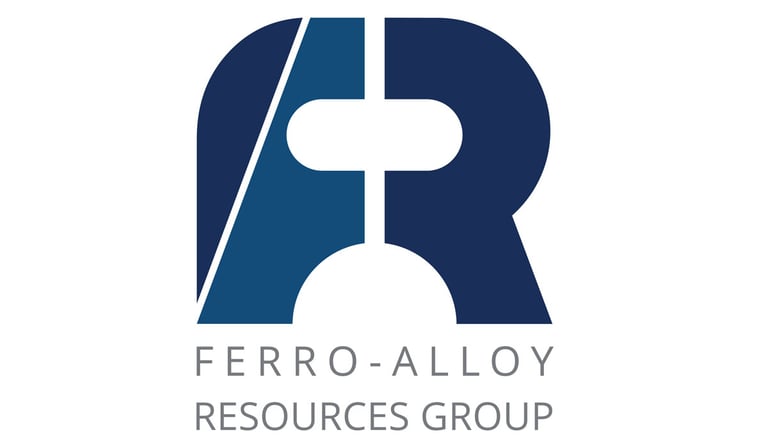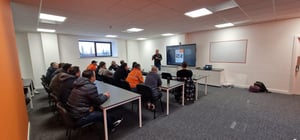Ferro-Alloy Resources Limited (LON:FAR), the vanadium producer and developer of the large Balasausqandiq vanadium deposit in Southern Kazakhstan, announced today its unaudited interim results for the six months ended 30 June 2021 .
Highlights:
· Improved financial results from existing vanadium processing operations reflecting higher realised prices offset by lower production due to Covid-19 related impacts that have now been largely resolved:
o Vanadium pentoxide prices rose 63% from US$5.2/lb in January 2021 to US$8.5/lb over the period;
o Prices for molybdic oxide and ferro-molybdenum grew 109% and 83% respectively
· Enhanced financial position to support new Balasausqandiq vanadium project development with US$8.2m in cash as at 30 June 2021 (2020: US$0.7m)
o Strategic Investment led by Vision Blue Resources Limited, with US$10.1m invested to date
· Significant incremental operational progress achieved to support increased production and enhanced product mix at existing operation:
o Test programme with Fraunhofer ICT institute launched on Company’s products for electrolyte production
· Board strengthened with the appointment of Sir Mick Davis, former Xstrata CEO, as Chairman and Peet Nienaber, former head of Xstrata Alloys, as a Non-Executive Director
Summary
During the period we continued to successfully deliver on our strategy of expanding our existing operations while progressing plans for the rapid development of the transformative Balasausqandiq vanadium project in parallel.
The expansion of production capacity to around 1,500 tonnes of saleable vanadium product per year is proceeding as planned. Some significant infrastructure upgrades have been completed and others are continuing and we have completed the installation of equipment to increase production capacity, convert AMV into vanadium pentoxide and produce ferro-molybdenum. We expect to achieve the first sales of ferro-molybdenum, vanadium pentoxide and possibly ferro-vanadium in the second half of the current year, providing enhanced revenues.
We have also worked with the Vision Blue team during the period to refine and expand the Bankable Feasibility Study on the large scale, low cost Balasausqandiq Project which has the potential to become the lowest cost producer of vanadium globally. As part of this process, a drilling programme has been developed to confirm sufficient reserves on a JORC Indicated basis to feed both Phase 1 and Phase 2 of the planned operations. The results of the Bankable Feasibility Study are expected during the last quarter of 2022.
The prices of vanadium pentoxide, molybdic oxide and ferro-molybdenum rose by 63%, 109% and 83% respectively in the period, underlining our confidence in the long-term prospects for the Company’s products.
The investment climate in Kazakhstan continues to further improve with the country receiving US$3.9 billion in foreign direct investment last year driven by growing investment in mining, transport, financial services, telecommunications and energy.
Balasausqandiq feasibility study
Development of the large Balasausqandiq vanadium deposit continues in parallel with the Company’s Existing Operations.
The Company has expanded the scope of the feasibility study to include both Phase 1 (1 million tonnes per year of ore treated) and Stage 2 (a total of 4 million tonnes of ore per year). This expanded feasibility study is fully funded, including a drilling programme that has been developed to confirm that reserves on a JORC Indicated basis are sufficient to feed the expanded Phase 2 production. Drilling is expected to commence in November 2021 and to be completed in the first half of 2022. The current contract is for 13,900 metres but with the potential to increase up to 20,000 metres.
The Company has supplied SGS (Lakefield) with 600 kg of sample for technological testing. The work is supported by Coffey/Tetratech Group with the purpose of proving the technology that was developed by the Company at its pilot plant operations. A further 450 kg of samples for variability testing have been selected and are being prepared for despatch.
Existing Operations
New products
Until late in 2020, the Group’s only vanadium product was ammonium metavanadate (AMV), an internationally traded product from which vanadium pentoxide is made by heating to dissociate the ammonia for collection and recycling. AMV is usually sold at a discount from published vanadium pentoxide prices. Conversion of this AMV to vanadium pentoxide has now commenced, improving the Company’s ability to obtain more favourable prices in future.
During the period under review we started the conversion of our calcium molybdate by-product into ferro-molybdenum, a higher value product, using the alumothermic process, with production of up to five tonnes of ferro-molybdenum expected each month depending on the type and molybdenum grade of the raw-materials treated.
The Company is now selling 100% of its residues from operations as low-grade nickel concentrates meaning no waste products from operations are retained on site.
Electrolyte for vanadium flow-batteries (VFBs)
After the end of the period, the Company signed an agreement with Fraunhofer ICT Institute in Germany, which carries out investigations on various vanadium electrolyte compositions and battery performance, to explore the Company’s product’s suitability for industrial electrolyte production for vanadium flow-batteries. Samples have been shipped and work has commenced.
In addition, in September 2020, we reported that the Company’s specialists had developed a new process for the production of electrolyte for VFBs directly from ammonium metavanadate, a more economical process. A Kazakhstan patent for the technology has recently been received.
Powerline
Connection to the high-voltage line was completed on schedule and on budget in June 2021. A delay by the suppliers of the automated control and metering system required by the line’s owners has pushed back the planned switching-on into October.
Infrastructure
A new laboratory with upgraded equipment has been built adjacent to the process plant which will help to meet customer requirements. The Company has also constructed a new warehouse for vanadium concentrates and finished goods.
Production
During the period ended 30 June 2021, production of vanadium pentoxide (V2O5) amounted to 88.2 tonnes, 9% below the corresponding period in 2020. The decline was caused by interruptions in the supply of vanadium concentrates caused by Covid-19 restrictions and a worldwide shortage of containers. From June 2021, supplies have started flowing normally and more than usual stocks have now been received to allow production to return to normal. 25.3 tonnes of calcium molybdate was produced in the period, compared with none in the first half of 2020 as production only started in the second half of 2020.
| Quarter (2021) | Production of Vanadium Pentoxide(tonnes of vanadium pentoxide contained in AMV*) | Change from 2020 | Production of Molybdic Oxide(tonnes of molybdic oxide contained in calcium molybdate) |
| Q1 | 57.4 | +20% | 21.9 |
| Q2 | 30.8 | -37% | 3.2 |
| H1 2021 | 88.2 | -9% | 25.3 |
* AMV: ammonium metavanadate
Outlook for the Existing Operation
Raw-materials supplies have returned to normal pre-covid levels, and consequently production in H2 is expected to be substantially higher than H1. Some bottlenecks have been experienced during the ramp-up of production which started in June and July 2021 and these are being addressed with a programme of improvements that are expected to unfold over the next three months.
Looking further ahead, the Company is procuring an electric arc furnace which can further double production capacity. This furnace will be used to produce ferro-vanadium directly from raw-material concentrates without first producing vanadium pentoxide, and it will also be used for the production of by-product ferro-nickel, a higher value product than the low grade concentrate currently being sold.
Revenues during H2 2021 are expected to increase not only by the expected ramp-up of throughput but also by the sales of the new products, ferro-molybdenum, vanadium pentoxide, nickel concentrate and possibly ferro-vanadium as described above.
Corporate
Further to the Subscription Agreement signed in March 2021 with Vision Blue Resources, a total of US$10.1m has been invested to date, made up of US$4.2m of Convertible Loan Notes and the remainder as equity. The Convertible Loan Notes will be converted into equity at the price originally agreed in March 2021 of 9 pence per share when to do so will not trigger the requirement for the Company to issue a new prospectus.
The proceeds of the funding package will be used to complete the expansion of the existing processing facilities and complete the Balasausqandiq feasibility study.
Under the terms of the investment agreement, Vision Blue Resources have options to invest a further US$2.5m at 9 pence per share, US$10m at 25 pence per share and US$20m at 78 pence per share at various milestones.
This strategic relationship with Vision Blue Resources included the appointment of Sir Mick Davis as Chairman, and subsequently Mr. Peet Nienaber as a Non-Executive Director. The experience, knowledge and contacts of both individuals will continue to play an important role as the Company develops.
Since the start of 2021 the Company has raised US$475,829 from the issue of 242 bonds, with 58 issued in February and a further 184 issued on 12 March 2021. All the bonds have been issued on the Astana Stock Exchange (“AIX”) with a nominal value of US$2,000 each, have a coupon of 5.8% payable twice-yearly, are unsecured and are repayable on 17 March 2023.
Product prices
In 2021 the published price for vanadium pentoxide rose from US$5.2/lb in January 2021 to US$8.5/lb over the period and is currently around US$8.8/lb.
Prices for molybdic oxide and ferro-molybdenum grew strongly during first half of 2021. Molybdic oxide increased from US$9.25/lb at the beginning of 2021 to US$20.00 now. Ferro-molybdenum followed a similar trend with an increase from US$22.9/kg in the beginning of 2021 up to US$44 now.
COVID-19
Although the major effects of Covid-19 on the delivery of raw-materials appear to be over, some minor disruptions are continuing. Quarantine requirements and transport restrictions continue to be imposed periodically and restrictions on foreigners coming to Kazakhstan are continuing, making it difficult to bring international specialists to site for the commissioning of new equipment or other studies.
The Company requires all employees arriving on site to have either a PCR test or a vaccination passport. By the beginning of September 2021, 95% of the site workforce had been vaccinated and no cases of illness have been detected.
The level of cases in Kazakhstan reduced in recent weeks to around 2,000 cases per day. According to official sources, the current level of vaccination is around 7.3 million people out of a population of 19 million, or around 38%.
Earnings and cash flow
The Group generated total revenues of US$1.5m for the period compared to US$1.1m for the first six months of 2020, reflecting the higher market prices. However, the delayed delivery of vanadium concentrates has curtailed production.
The cost of sales reduced to US$1.5m from US$1.9m for the first six months of 2020, reflecting primarily the cost of concentrate that was treated during the first half of 2020 comparing to new concentrate costs in the first half of 2021.
Administrative expenses amounted to US$0.8m, (H1 2020: US$0.8m).
The Group made a reduced net loss before and after tax of US$1. 1 m (H1 2020: loss of US$1.7m) reflecting the greater gross income received during the first half of 2021 (US$0.056) compared with a gross loss in the first half of 2020 (US$0.8m).
Net cash outflows from operating activities totalled US$1.3m, (H1 2020: cash outflow US$0.7m). Investment activities and capital expenditure increased significantly, with net cash outflows from investing activities totalling US$1.6m (H1 2020: US$0.074m). Investment was made mainly in the Balasausqandiq feasibility study. Net cash inflows from financing activities totalled US$ 10.1 m (H1 2020: US$0.7m) being the proceeds, net of commissions, from equity and convertible loan notes raised with Vision Blue Resources and bonds issues.
Balance sheet review
Non-current assets totalled US$6.4m at 30 June 2021 (2020: US$5.1m), reflecting investment in the feasibility study and investment into completion of the construction of the high-voltage line.
Current assets excluding cash balances totalled US$1.6m compared with US$0.9m at 31 December 2020. Higher trade and other receivables and prepayments were offset by lower inventory levels.
The Group had cash of US$8.2m at 30 June 2021 (2020: US$0.7m).
Description of principal risks, uncertainties and how they are managed
(a) Current processing operations:
Current processing operations make up a small part of the Group’s expected future value but provide useful cash flows in the near term and allow the group to gain valuable experience of the vanadium industry. The principal risk of this operation is the price of its product, vanadium. The price of vanadium pentoxide is volatile and rose from historic lows at the beginning of 2016 to a near-record high of nearly US$30/lb near the end of 2018. Currently, the price of vanadium pentoxide is at around US$8.8/lb which is a little less than the inflation-adjusted ten-year average to date. Most forecasters anticipate that vanadium will be in deficit in the short to medium term, resulting in some recovery in current prices, and will return to the long-run marginal cost of production in the longer term which may be substantially higher. The Company acquires raw materials at a cost that is related to the price of vanadium so there is a natural hedge but there is a risk of changes in vanadium prices between the time of acquisition of the raw materials and sale of the product which cannot be entirely avoided.
The processing operation is also dependent on the continuing availability of raw materials which are subject to competition from other processors. The Company is mitigating this risk by positioning itself to treat a wide variety of potential raw-materials and maintaining low treatment costs, whilst extracting the maximum value from by-product constituents.
The level of profitability of the current processing operation is also dependent on production levels being sufficient to generate profits to cover fixed overheads. The level of production could be impacted by unanticipated production difficulties, power outages and raw-material delivery limitations. The Company aims to keep a stockpile of raw-materials and has installed a larger capacity generator to maintain production during outages.
The Company is currently carrying out various expansion projects which will lower the average cost of production and as part of this project, has connected to a larger capacity and more reliable power supply which is expected to start delivering power shortly. A substantial part of this expansion has already been completed .
There remains a risk that the Covid-19 crisis worsens in Kazakhstan. This could cause further disruption to supply-lines, staffing and subcontractors as has already occurred, but it is also possible that a case might arise on site requiring a temporary shutdown of operations. In addition, Covid-19 may impact the availability of finance or the terms which are available. Whilst it is not possible to guard against this, the Company continues to take all recommended precautions, including a very high level of vaccination amongst employees, and will aim to maintain higher than normal stores of essential supplies on site. In terms of funding, cash flows are monitored on a continuous basis to enable the Company to take proactive measures to safeguard liquidity.
(b) Financing risk :
The Company is in stronger financing position relative to the prior year. In March of 2021 the Company signed an investment agreement with Vision Blue Resources. Under the terms of this agreement, investment of US$10.1m has already been made which is expected to be sufficient to finance the completion of the expansion of the existing plant and the feasibility study.
(c) Climate change risk :
Although no specific risks to the Company’s operations have been identified, the Company’s operations could be subject to extreme weather conditions and the prices of its products may be subject to changes in the world’s economy caused by climate change. Kazakhstan is planning to publish a document entitled “A concept of low carbon development by 2050” which is not yet publicly available.
(d) Risks associated with the developing nature of the Kazakh economy:
According to the World Bank Kazakhstan has transitioned from lower-middle-income to upper-middle-income status in less than two decades. Kazakhstan’s regulatory environment has similarly developed, and the Company believes that the period of rapid change and high risk is coming to an end. Nevertheless, the economic and social regulatory environment continues to develop and there remain some areas where regulatory risk is greater than in developed economies.
(e) Balasausqandiq project:
The Balasausqandiq project is a much larger contributor to the Group’s value than current operations and its value is primarily dependent on long term vanadium prices.
The Project is also dependent on raising finance to meet capital costs anticipated to amount to in excess of US$100m for the first phase. Raising this money will be dependent on the successful outcome of the western bankable feasibility study which is ongoing. The favourable financial and other characteristics of the Project determined by studies so far completed give the directors confidence that the outcome of the study will be successful. Initial discussions with the providers of finance, including with the Development Bank of Kazakhstan for which our project has passed through initial screening, have been encouraging.
Responsibility statements
Ferro-Alloy Resources Directors’ Responsibility Statement
We confirm that to the best of our knowledge:
a) the Condensed set of Interim Financial Statements has been prepared in accordance with IAS 34 ‘Interim Financial Reporting’;
b) the interim management report includes a fair review of the information required by DTR 4.2.7R (indication of important events during the first six months and description of principal risks and uncertainties for the remaining six months of the year);
c) the interim management report includes a fair review of the information required by DTR 4.2.8R (disclosure of related parties’ transactions and changes therein); and
d) the condensed set of interim financial statements, which has been prepared in accordance with the applicable set of accounting standards, gives a true and fair view of the assets, liabilities, financial position and profit or loss of the issuer, or the undertakings included in the consolidation as a whole as required by DTR 4.2.4R.
This Half Yearly Report has been approved by the Board and signed on its behalf by:
James Turian
Director











































